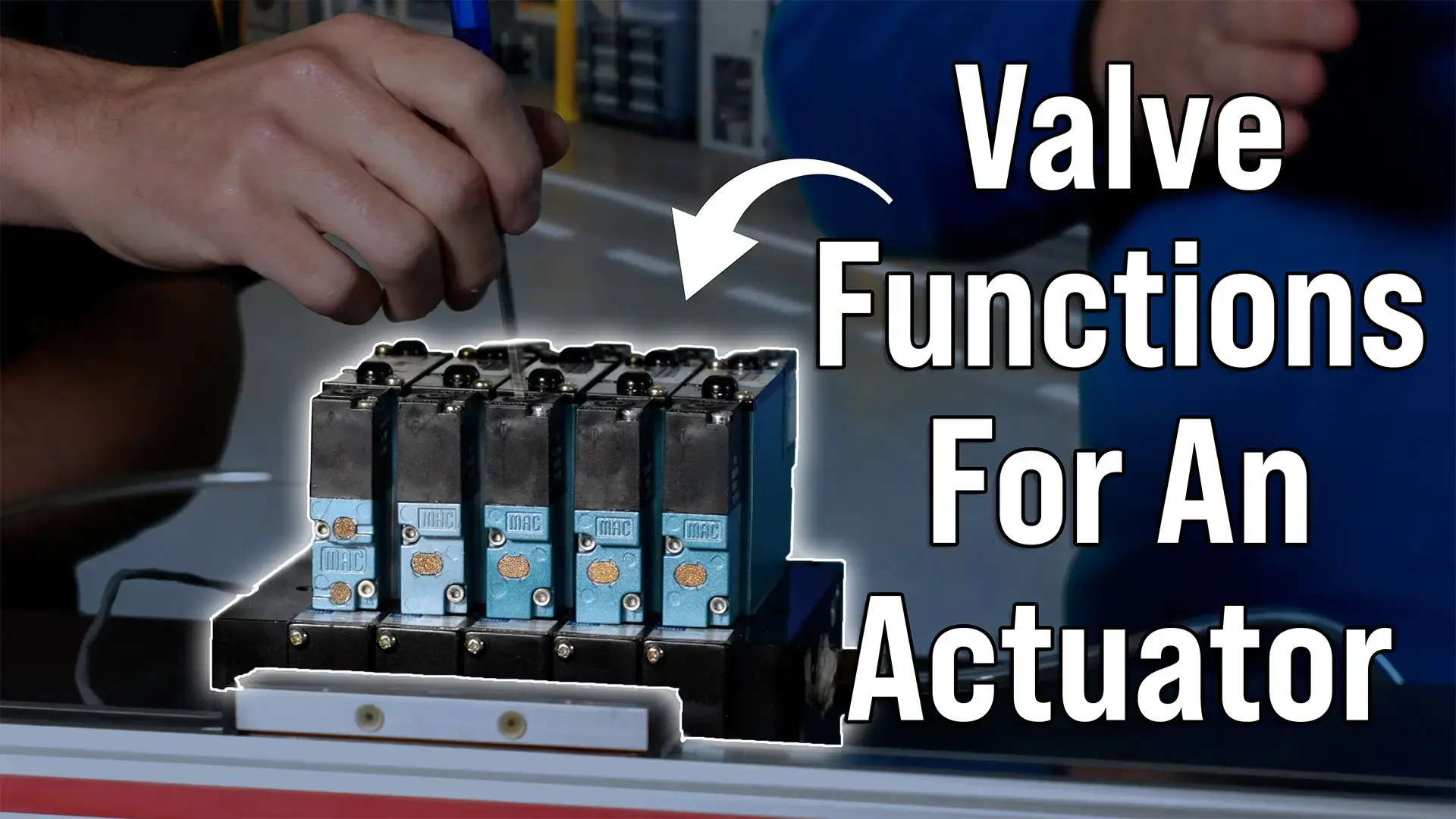
Pneumatic valves are a key part of many industrial machines, controlling the movement of air to power different components. If you’re new to this topic, don’t worry! We’ll break it down step by step. This blog explains five common types of pneumatic valves and how they work. You can also watch the video below for a hands-on look.
Single Solenoid Two-Position Valve
The single solenoid two-position valve is simple and reliable. When activated, it moves to one position; when deactivated, it returns to the starting position. Think of it like a light switch—it’s either on or off.
To keep the valve in one position, you need to hold the signal. This makes it great for tasks where you need a predictable back-and-forth motion.

Double Solenoid Two-Position Valve
The double solenoid two-position valve is a step up. Instead of holding the signal, you only need a quick signal to move it to the desired position. Once it’s there, it stays put, even if the signal stops. This feature is handy in situations where the system might lose power. When it restarts, the valve will still be in the right position, ensuring smooth operations.

Three-Position Closed Center Valve
The three-position closed center valve is ideal for stopping and holding things in place. When the signal stops, the valve traps air inside, locking the actuator in its current position. This is perfect for jobs that require precise positioning. For example, if you need a robotic arm to stop halfway, this valve will keep it steady until you’re ready to move again.

Three-Position Open Center Valve
The open center valve is more flexible. When the signal stops, the valve releases all the air. This lets the actuator move freely. This design works well for things like machine doors. Imagine needing to manually open a CNC machine door during maintenance. The open center valve makes it easy to move without resistance.

Three-Position Pressure Center Valve
The pressure center valve combines features of the closed and open center valves. It applies pressure to both sides of the actuator to keep it stable, but it also allows controlled movement when needed.
If the system loses pressure, the actuator can move freely, similar to the open center valve. This makes it versatile for complex tasks that need both control and flexibility.
Why This Matters
Knowing how these valves work can help you choose the right one for your equipment. Each type has specific uses, and the right choice can improve how efficiently your system runs.
For a closer look at these valves in action, watch the video below. If you have questions or need help with pneumatic systems, contact your NEFF representative. We’re here to help with your next project.
Watch the video here:

